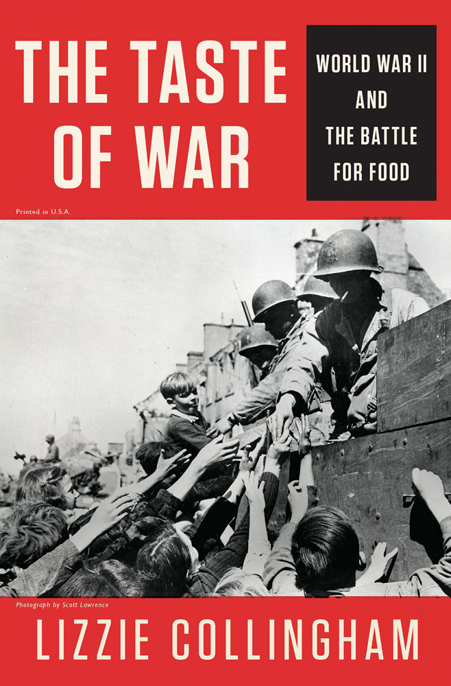
The Taste of War
- اطلاعات
- نقد و بررسی
- دیدگاه کاربران
نقد و بررسی

February 15, 2012
A comprehensive evaluation of the crucial role of the global food economy in the waging of war. The starvation policy of the Nazi occupiers and the wartime exigencies that effectively transformed the diet as we know it are only two important aspects to this fascinating, authoritative work on food and war. In order to keep an army running smoothly and the civilian population pacified, writes Collingham (Curry: A Tale of Cooks and Conquerers, 2006, etc.), a government had to control the food supply. This was equally true of Britain, Germany, Japan and the U.S., though it played out very differently during World War II. Creating a National Socialist empire relied on becoming self-sufficient, especially after the legacy of hunger and defeat wrought by World War I. According to Herbert Backe's Hunger Plan, occupation of the Ukrainian breadbasket would deliver the resources to Germany only if the flow of food could be shut down to Russian cities, thus starving 30 million Soviet citizens (also Jews, indigenous inhabitants and prisoners of war). In the throes of an agricultural crisis, Japan was more reliant on imports from its colonies Formosa and Korea and later suffered starvation during the American blockade; moreover, the white-rice-based diet provided insufficient protein for the Japanese troops, and a more Chinese and Western diet was adopted. Britain relied heavily on its colonies to feed the wartime appetite, as well as on U.S. lend-lease supplies, only suffering from want during the winter of 1940-41 because of the U-boat blockade. Indeed, American farmers supplied the bounty of global wartime needs and also offered ample food at home. Collingham study casts a staggeringly large net. She examines terrible famines in Bengal and Greece, the Soviet ability to withstand starvation, the role of the black market and how nutritional science reshaped the diet of soldiers and civilians. A definitive work of World War II scholarship.
COPYRIGHT(2012) Kirkus Reviews, ALL RIGHTS RESERVED.

November 1, 2011
The role of food during World War II? It sounds specialized, but consider: 20 million people died during the war from starvation or malnutrition alone, equal to the number of military deaths. The Nazis set about eliminating "useless eaters." British rationing worked at home, but wholly preventable famine killed millions in India. And though America's food production remained strong, it was at this time that our "fast-food nation" got its start. Intriguing for informed readers.
Copyright 2011 Library Journal, LLC Used with permission.

March 15, 2012
Surveying the food factor in WWII, Collingham seeks its due weight in the instigation and course of the conflict. Based on formidable research, her history considers the importance of food supplies to the major belligerents. Venturing a thesis that the agricultural preoccupations of Japanese and German leaders were significant causes of WWII, she recounts Japan's plan to convert occupied Manchuria into a breadbasket and the Nazis' impetus to conquer an eastern agrarian empire. Alongside the unfolding of the Nazis' fantastical schemes, Collingham analyzes food administration on the Allied side, examining closely the situation in the British Empire, whose maritime food trade attracted enemy attack. Shifting her narrative spotlight among soldiers' and civilians' food-hunting and -eating experiences; the improvisations of nutritionists, agronomists, and food processors; and the decisions of officials tasked with food distribution, Collingham shows the tautness of supply chains and the wartime famines to which their disruption through genocidal intent, combat attrition, and misunderstanding of economics gave rise. Covering a neglected aspect of WWII, Collingham's is an important, original contribution to the global conflict's historiography.(Reprinted with permission of Booklist, copyright 2012, American Library Association.)




دیدگاه کاربران